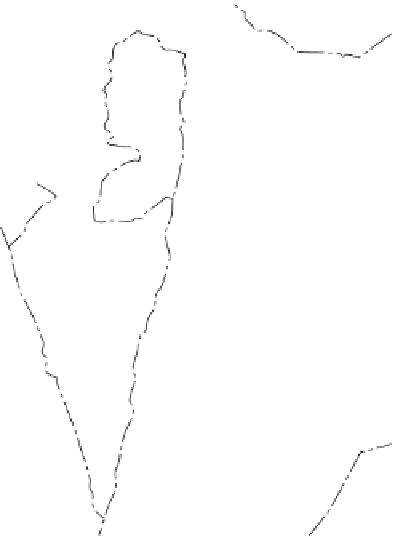Geography Reference
In-Depth Information
Figure 13.11
The Global Water System.
The human imprint is refl ected in this diagram of the global
water system.
Reproduced with permission from:
American Geophysical Union.
land, sustaining crops and forests and replenishing soils
and wells.
In 1883 the Indonesian volcano Krakatau erupted
catastrophically, throwing 10 cubic kilometers (2.5 cubic
miles) of rock and ash into the atmosphere. Total dark-
ness prevailed in the area for nearly three days; dust from
the explosion encircled Earth and created vividly col-
ored sunsets for years afterward. However, eventually
the atmosphere cleared, and all traces of the eruption dis-
appeared. In 1980 the eruption of Mount St. Helens in
the northwestern United States caused a similar, though
much smaller, globe-encircling cloud of volcanic dust in
the upper atmosphere. Again, the atmosphere cleared that
volcanic dust.
Scientists are concerned that human pollution of
the atmosphere will result in longer lasting, possibly
permanent, damage. True, the air disperses even the
densest smoke and most acrid chemical gases. However,
anthropogenic sources of pollution from two centuries
of industrial expansion are pouring into the atmosphere
at an unprecedented rate. While the United States
remains the world's largest per capita leader in terms of
pollutants generated, China has overtaken the United
States in total volume, India's share is rising rapidly, and
other growing economies are compounding a problem
that can only be solved by determined international
action. Such coordinated action has different economic
implications for different countries, making it diffi cult
to achieve.
GOLAN
HEIGHTS
Haifa
Tel Aviv
Amman
Jerusalem
BANK
Gaza
GAZA
STRIP
Negev
Desert
Water pipeline
0
25
50 Kilometers
0
25
50 Miles
Figure 13.12
Key Water Resources in the Middle East.
© E. H. Fouberg, A.
B. Murphy, H. J. de Blij, and John Wiley & Sons, Inc.








































































































